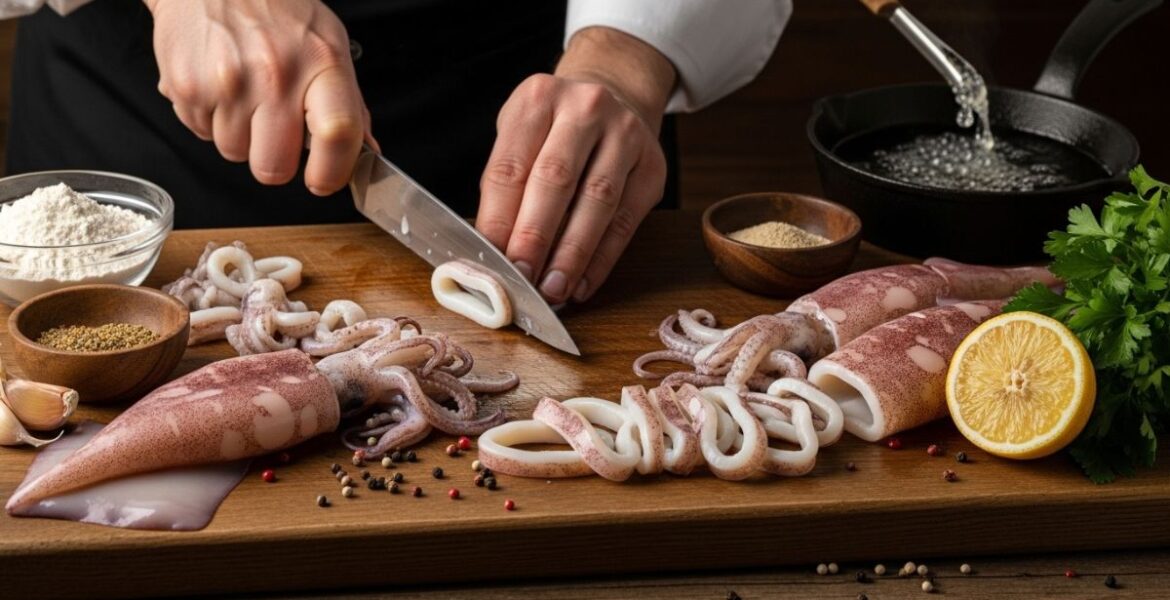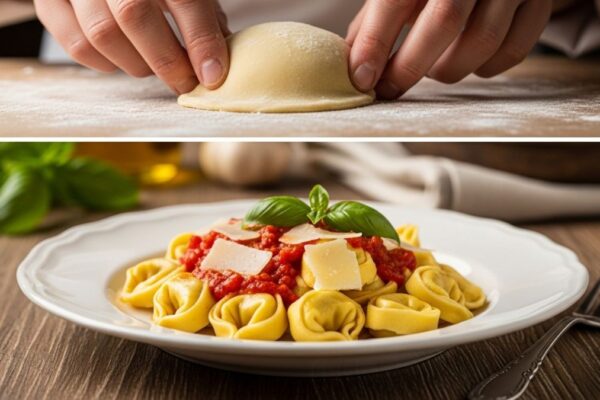Discovering calamariere: The Art of Perfectly Cooked Squid

If you’ve ever dined at a seaside restaurant, chances are you’ve come across calamari on the menu. But have you ever heard of calamariere? This delightful dish elevates squid to new heights with its tender texture and rich flavors. As seafood lovers know, cooking squid can be tricky. Yet when done right, it transforms into a succulent delicacy that is hard to resist.
Whether you’re familiar with calamari or just curious about exploring this tantalizing treat, let’s dive deeper into the art of perfectly cooked squid. From learning about the types of squid used for this dish to mastering some invaluable tips and tricks in the kitchen, get ready to discover everything there is to know about calamariere!
What is Calamariere?
Calamariere is a culinary gem that celebrates the beauty of squid. This dish hails from Mediterranean cuisine and highlights the versatility of this ocean delicacy. When prepared correctly, calamariere offers a delightful combination of tender texture and savory flavor.
What sets calamariere apart is its emphasis on simplicity and freshness. The squid is typically marinated in olive oil, lemon juice, garlic, and herbs before being grilled or fried to perfection. This method enhances the natural taste while adding layers of aromatic goodness.
While often enjoyed as an appetizer or part of a seafood platter, calamariere can also stand alone as a main course. Its vibrant presentation makes it appealing for gatherings or special occasions—perfectly cooked rings glistening with seasoning invite eager diners to indulge in every bite.
Types of Squid Used for Calamariere
When exploring calamariere, it’s essential to know the types of squid that can elevate this dish. The most common choice is the European common squid, or *Loligo vulgaris*. Its tender texture and mild flavor make it a favorite among chefs.
Another popular option is the giant Pacific squid. This variety offers a firmer bite and holds up well during cooking. It’s perfect for those who enjoy a bit more chew in their calamariere.
Then there’s the shortfin mako, known for its subtle sweetness. This type brings an interesting twist to traditional recipes, adding depth to each bite.
Consider using baby squid or *mini calamari*. These tiny morsels are delightful when grilled or fried whole, providing a unique presentation that stands out on any plate. Each type contributes distinct flavors and textures that enhance your culinary experience with calamariere.
The Secret to Perfectly Cooked Squid: Tips and Tricks
Perfectly cooked squid is a culinary delight that can elevate any dish. The key lies in timing. Squid cooks quickly, and overcooking can lead to rubbery textures.
Start by cleaning the squid properly. Remove the innards and skin for a tender finish. Next, cut it into rings or leave it whole based on your preference.
When cooking, opt for high heat methods like grilling or frying. A hot pan ensures quick cooking without losing moisture.
For added flavor, marinate the squid beforehand with olive oil, lemon juice, garlic, and herbs. This enhances its natural taste while keeping it juicy.
Remember to keep an eye on your cooking time—just 1-2 minutes per side is often enough for perfect tenderness! Serve immediately after cooking to enjoy the best texture possible.
Traditional Calamariere Recipe
To create a traditional calamariere, start with fresh squid. Clean and prepare them by removing the insides and cutting them into rings. Pat them dry to ensure they hold up during cooking.
Next, season the squid with salt and pepper for that essential flavor boost. Dredge each piece in flour, shaking off any excess. This will give your calamariere that perfect crispy coating.
Heat olive oil in a deep skillet over medium-high heat. When it’s shimmering, carefully add the squid rings in batches to avoid overcrowding. Fry until golden brown—this usually takes about 1-2 minutes.
Remove from oil and drain on paper towels to absorb any excess grease. Serve hot with a side of marinara or aioli for dipping, garnished with lemon wedges for an extra zing! Enjoy this delightful dish at gatherings or as a special treat just for yourself!
Modern Twists on the Classic Dish
Modern cuisine loves to reinvent classic dishes, and calamariere is no exception. Chefs are exploring innovative flavor profiles while maintaining the essence of this beloved squid dish.
One popular twist incorporates Asian influences. Think ginger and sesame oil paired with the squid for a fresh take that excites the palate. This fusion creates an intriguing balance between traditional Mediterranean flavors and vibrant Asian spices.
Another exciting approach is using different cooking techniques. Instead of frying, consider grilling or even sous-vide preparations. These methods keep the squid tender while introducing new textures to delight your guests.
For those who enjoy spice, adding chili flakes or a zesty chimichurri sauce can elevate calamariere to new heights. The heat adds a surprising kick that keeps diners coming back for more.
These modern interpretations showcase how versatile calamariere can be in today’s culinary landscape, inviting creativity at every turn.
Other Ways to Incorporate Squid into Your Cooking
Squid is a versatile ingredient that can elevate many dishes. Beyond calamariere, consider adding it to stir-fries for a quick protein boost. The tender texture of squid pairs beautifully with vegetables and sauces.
Another great option is incorporating squid into pasta dishes. Tossing sautéed squid with garlic, olive oil, and fresh herbs creates an irresistible seafood flavor profile.
For those who enjoy bold flavors, try marinating squid in citrus juices or spicy marinades before grilling. This method enhances the natural taste while providing a delightful char.
Consider using dried or salted squid as a snack too. It’s popular in various cultures and offers unique savory notes perfect for casual munching or entertaining guests.
Don’t overlook the possibility of including squid in soups or stews; its ability to absorb flavors makes it an excellent addition to hearty meals.
Conclusion:
Calamariere is more than just a dish; it’s an experience that brings together flavors, techniques, and the joy of cooking. Understanding what calamariere truly is sets the stage for mastering this delicacy. With a variety of squid types available, each brings its unique texture and flavor to your plate.
Perfecting the art of cooking squid requires attention to detail—timing plays a crucial role in achieving that tender bite without losing moisture. Whether you opt for traditional recipes or decide to experiment with modern twists, there’s plenty of room for creativity in how you prepare calamariere.



Leave a Reply